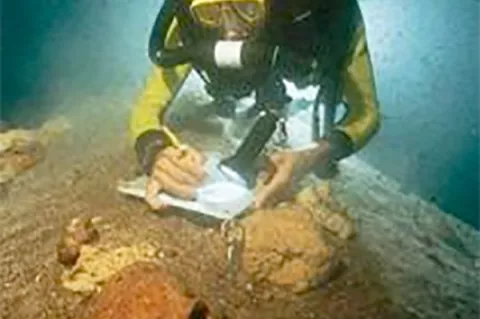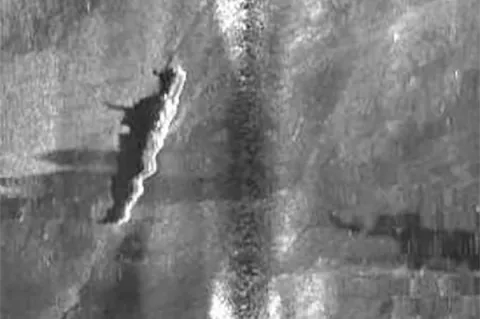Russian submarine S7
In the 1930s, the Soviet Union built a series of submarines called the S class, based on German designs.
In the summer of 1942, the S7 sank the Swedish cargo ships Margareta and Luleå, delivering iron to Germany. Shortly after, the sub was cruising on the surface at night, off the Swedish coast not far from Norrtälje, when she was spotted by the Finnish submarine Vesihiisi. The Vesihiisi fired one torpedo and the S7 sank quickly.














